-
 Bitcoin
Bitcoin $83,503.9101
-0.87% -
 Ethereum
Ethereum $1,833.5962
-1.23% -
 Tether USDt
Tether USDt $0.9999
-0.01% -
 XRP
XRP $2.0696
-0.69% -
 BNB
BNB $608.6354
1.87% -
 Solana
Solana $119.8327
-3.38% -
 USDC
USDC $1.0000
0.00% -
 Dogecoin
Dogecoin $0.1667
-1.42% -
 Cardano
Cardano $0.6533
-2.10% -
 TRON
TRON $0.2370
-0.07% -
 Toncoin
Toncoin $3.7949
-5.16% -
 UNUS SED LEO
UNUS SED LEO $9.4071
0.16% -
 Chainlink
Chainlink $13.1787
-2.55% -
 Stellar
Stellar $0.2635
-0.98% -
 Avalanche
Avalanche $18.8166
-0.69% -
 Sui
Sui $2.3934
2.75% -
 Shiba Inu
Shiba Inu $0.0...01237
1.53% -
 Hedera
Hedera $0.1648
0.25% -
 Litecoin
Litecoin $83.7556
2.38% -
 Polkadot
Polkadot $4.0432
-0.51% -
 MANTRA
MANTRA $6.3564
3.55% -
 Bitcoin Cash
Bitcoin Cash $304.2808
0.31% -
 Bitget Token
Bitget Token $4.5551
-0.48% -
 Dai
Dai $1.0000
0.00% -
 Ethena USDe
Ethena USDe $0.9998
0.00% -
 Pi
Pi $0.6455
-6.50% -
 Hyperliquid
Hyperliquid $12.4911
-4.88% -
 Monero
Monero $217.0104
-0.33% -
 Uniswap
Uniswap $6.0277
-0.47% -
 Aptos
Aptos $5.2867
1.16%
What Is KYC?
Know Your Customer (KYC) regulations mandate financial institutions to verify customer identities to mitigate risks associated with money laundering and terrorism financing.
Nov 07, 2024 at 07:36 am

Understanding Know Your Customer (KYC): A Comprehensive Guide
Introduction
Know Your Customer (KYC) is a crucial regulatory framework in the financial industry that helps businesses mitigate risks associated with money laundering, terrorism financing, and other illicit activities. This guide delves into the intricacies of KYC, exploring its key components, implementation processes, and global regulatory landscape.
What is KYC?
KYC is a set of procedures and guidelines that financial institutions must follow to identify and verify the identities of their customers. It involves gathering and analyzing personal information, financial data, and business relationships to determine the risk of the customer engaging in illegal activities.
Steps Involved in KYC
KYC implementation typically involves a comprehensive process:
- Customer Identification: This step involves collecting personal information from the customer, such as name, address, date of birth, and identifying documents. The institution verifies the validity of these documents and matches the information against existing databases.
- Risk Assessment: Once the customer's identity is established, the institution assesses the risk of the customer being involved in money laundering or other illicit activities. Factors considered include the customer's occupation, source of funds, and transaction history.
- Ongoing Monitoring: The institution must continuously monitor the customer's account activity for suspicious transactions. This involves using transaction monitoring systems and implementing transaction limits to detect unusual or large-scale movements.
- Enhanced Due Diligence: For higher-risk customers, the institution may conduct enhanced due diligence procedures. This involves more in-depth background checks, such as obtaining references or conducting site visits, to fully understand the customer's business activities and potential risks.
Benefits of KYC
Implementing KYC protocols provides numerous benefits to financial institutions:
- Compliance with Regulations: KYC is a legal requirement in most jurisdictions, and institutions that fail to comply can face penalties and fines.
- Risk Management: KYC helps institutions identify and mitigate risks associated with illicit activities, protecting their assets and reputation.
- Customer Trust and Confidence: By demonstrating their commitment to KYC, institutions gain the trust and confidence of their customers, especially during onboarding.
Global Regulatory Landscape
KYC regulations vary across jurisdictions, but they share common principles:
- FATF Recommendations: The Financial Action Task Force (FATF) sets global standards for KYC practices, providing guidance on customer identification, risk assessment, and record-keeping.
- EU AML Directive: The European Union's Anti-Money Laundering Directive (AML4 and AML5) outlines obligations for financial institutions to implement KYC measures.
- US Patriot Act: The Uniting and Strengthening America by Providing Appropriate Tools Required to Intercept and Obstruct Terrorism Act (Patriot Act) includes KYC provisions for US financial institutions.
Challenges and Considerations
- Balancing Security and Convenience: Implementing KYC measures can add complexity or slow down the onboarding process for customers, potentially affecting user experience.
- Data Privacy Concerns: KYC involves collecting a significant amount of personal information, raising concerns about data privacy and the need for robust security measures.
- Evolving Regulatory Landscape: KYC regulations are subject to frequent updates, and institutions must stay abreast of the latest requirements to maintain compliance.
Conclusion
KYC is a critical component of the financial industry's efforts to combat illicit activities. By implementing robust KYC procedures, institutions can protect themselves from financial crimes, build customer trust, and maintain compliance with regulatory requirements.
Disclaimer:info@kdj.com
The information provided is not trading advice. kdj.com does not assume any responsibility for any investments made based on the information provided in this article. Cryptocurrencies are highly volatile and it is highly recommended that you invest with caution after thorough research!
If you believe that the content used on this website infringes your copyright, please contact us immediately (info@kdj.com) and we will delete it promptly.
- Crypto Just Got a Wake-up Call.
- 2025-04-03 13:25:12
- BlockDAG (BDAG) Dominates the 2025 Cryptocurrency Market As Its Presale Surges Past $200M
- 2025-04-03 13:25:12
- Rexas Finance (RXS) Could Be the Next Cardano (ADA)
- 2025-04-03 13:20:12
- Bitcoin (BTC) Price Plunges as President Trump's New Tariffs Rock Crypto Assets
- 2025-04-03 13:20:12
- Mutuum Finance (MUTM) Is One of the Top Solid DeFi Ventures, Alongside Pepe (PEPE) and Ethereum (ETH)
- 2025-04-03 13:15:13
- Mutuum Finance (MUTM) Surpasses $6 Million in Funding, With More Than 7,700 Holders Taking Their Positions Early
- 2025-04-03 13:15:13
Related knowledge
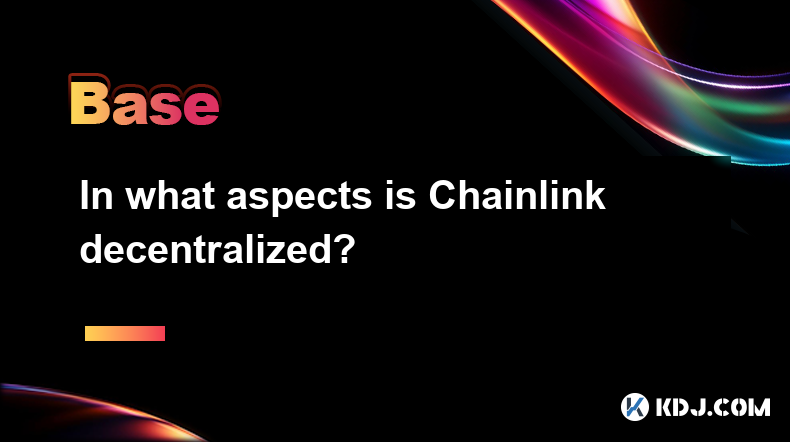
In what aspects is Chainlink decentralized?
Apr 02,2025 at 05:49pm
Chainlink is a decentralized oracle network that plays a crucial role in connecting smart contracts on blockchain networks with real-world data. Its decentralization is reflected in multiple aspects, ensuring the network's security, reliability, and integrity. This article delves into the various ways Chainlink achieves decentralization, including its n...
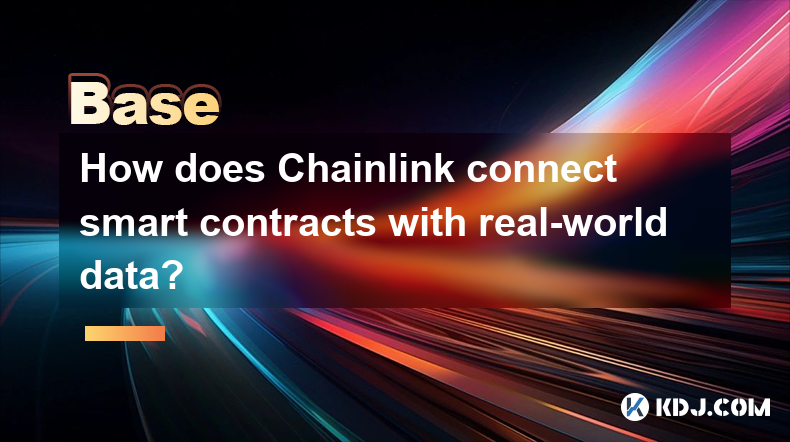
How does Chainlink connect smart contracts with real-world data?
Apr 02,2025 at 03:56pm
Chainlink is a decentralized oracle network that plays a crucial role in connecting smart contracts on blockchain platforms with real-world data. Smart contracts are self-executing contracts with the terms of the agreement directly written into code, but they can only interact with on-chain data. To access real-world data, such as stock prices, weather ...
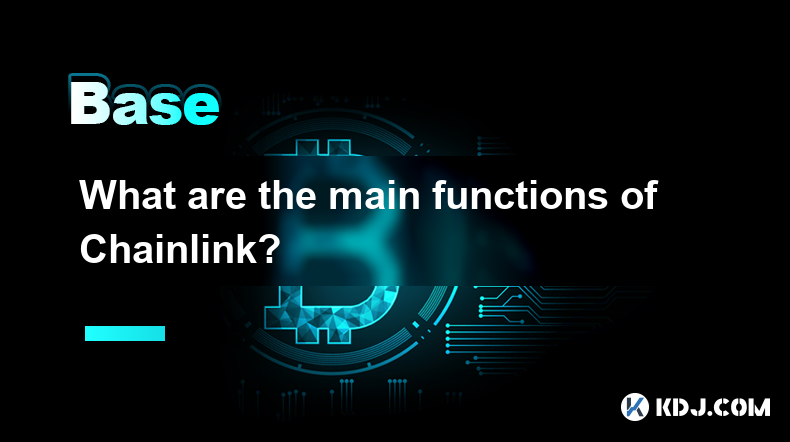
What are the main functions of Chainlink?
Apr 02,2025 at 11:49pm
Chainlink is a decentralized oracle network that plays a crucial role in connecting smart contracts with real-world data and external APIs. The primary function of Chainlink is to facilitate the seamless integration of off-chain data into on-chain smart contracts, enabling them to execute based on real-world events and information. This integration is v...

How does Chainlink work?
Apr 03,2025 at 01:50am
Chainlink is a decentralized oracle network that connects smart contracts with real-world data and external APIs. It plays a crucial role in the blockchain ecosystem by enabling smart contracts to interact with data outside their native blockchain environment. This connectivity is essential for smart contracts to execute based on real-world events and d...
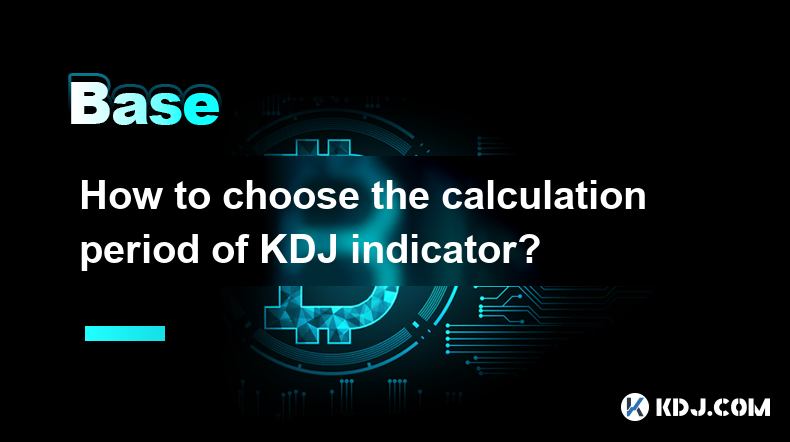
How to choose the calculation period of KDJ indicator?
Apr 02,2025 at 01:00pm
The KDJ indicator, also known as the Stochastic Oscillator, is a popular technical analysis tool used by cryptocurrency traders to identify potential buy and sell signals. The calculation period of the KDJ indicator is crucial in determining its effectiveness in predicting market trends. In this article, we will explore the factors to consider when choo...
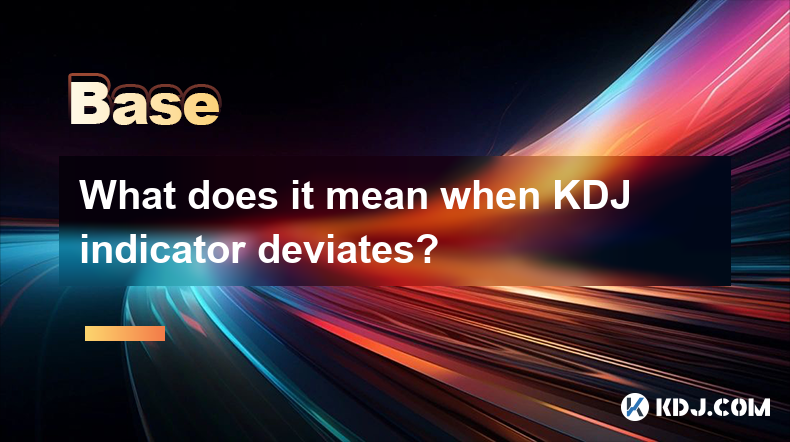
What does it mean when KDJ indicator deviates?
Apr 01,2025 at 03:08pm
The KDJ indicator, also known as the Stochastic Oscillator, is a popular technical analysis tool used in the cryptocurrency market to predict price movements. When the KDJ indicator deviates, it means that the current price of a cryptocurrency is moving away from its typical range, as indicated by the KDJ lines. This deviation can signal potential trend...

In what aspects is Chainlink decentralized?
Apr 02,2025 at 05:49pm
Chainlink is a decentralized oracle network that plays a crucial role in connecting smart contracts on blockchain networks with real-world data. Its decentralization is reflected in multiple aspects, ensuring the network's security, reliability, and integrity. This article delves into the various ways Chainlink achieves decentralization, including its n...

How does Chainlink connect smart contracts with real-world data?
Apr 02,2025 at 03:56pm
Chainlink is a decentralized oracle network that plays a crucial role in connecting smart contracts on blockchain platforms with real-world data. Smart contracts are self-executing contracts with the terms of the agreement directly written into code, but they can only interact with on-chain data. To access real-world data, such as stock prices, weather ...

What are the main functions of Chainlink?
Apr 02,2025 at 11:49pm
Chainlink is a decentralized oracle network that plays a crucial role in connecting smart contracts with real-world data and external APIs. The primary function of Chainlink is to facilitate the seamless integration of off-chain data into on-chain smart contracts, enabling them to execute based on real-world events and information. This integration is v...

How does Chainlink work?
Apr 03,2025 at 01:50am
Chainlink is a decentralized oracle network that connects smart contracts with real-world data and external APIs. It plays a crucial role in the blockchain ecosystem by enabling smart contracts to interact with data outside their native blockchain environment. This connectivity is essential for smart contracts to execute based on real-world events and d...

How to choose the calculation period of KDJ indicator?
Apr 02,2025 at 01:00pm
The KDJ indicator, also known as the Stochastic Oscillator, is a popular technical analysis tool used by cryptocurrency traders to identify potential buy and sell signals. The calculation period of the KDJ indicator is crucial in determining its effectiveness in predicting market trends. In this article, we will explore the factors to consider when choo...

What does it mean when KDJ indicator deviates?
Apr 01,2025 at 03:08pm
The KDJ indicator, also known as the Stochastic Oscillator, is a popular technical analysis tool used in the cryptocurrency market to predict price movements. When the KDJ indicator deviates, it means that the current price of a cryptocurrency is moving away from its typical range, as indicated by the KDJ lines. This deviation can signal potential trend...
See all articles























































































